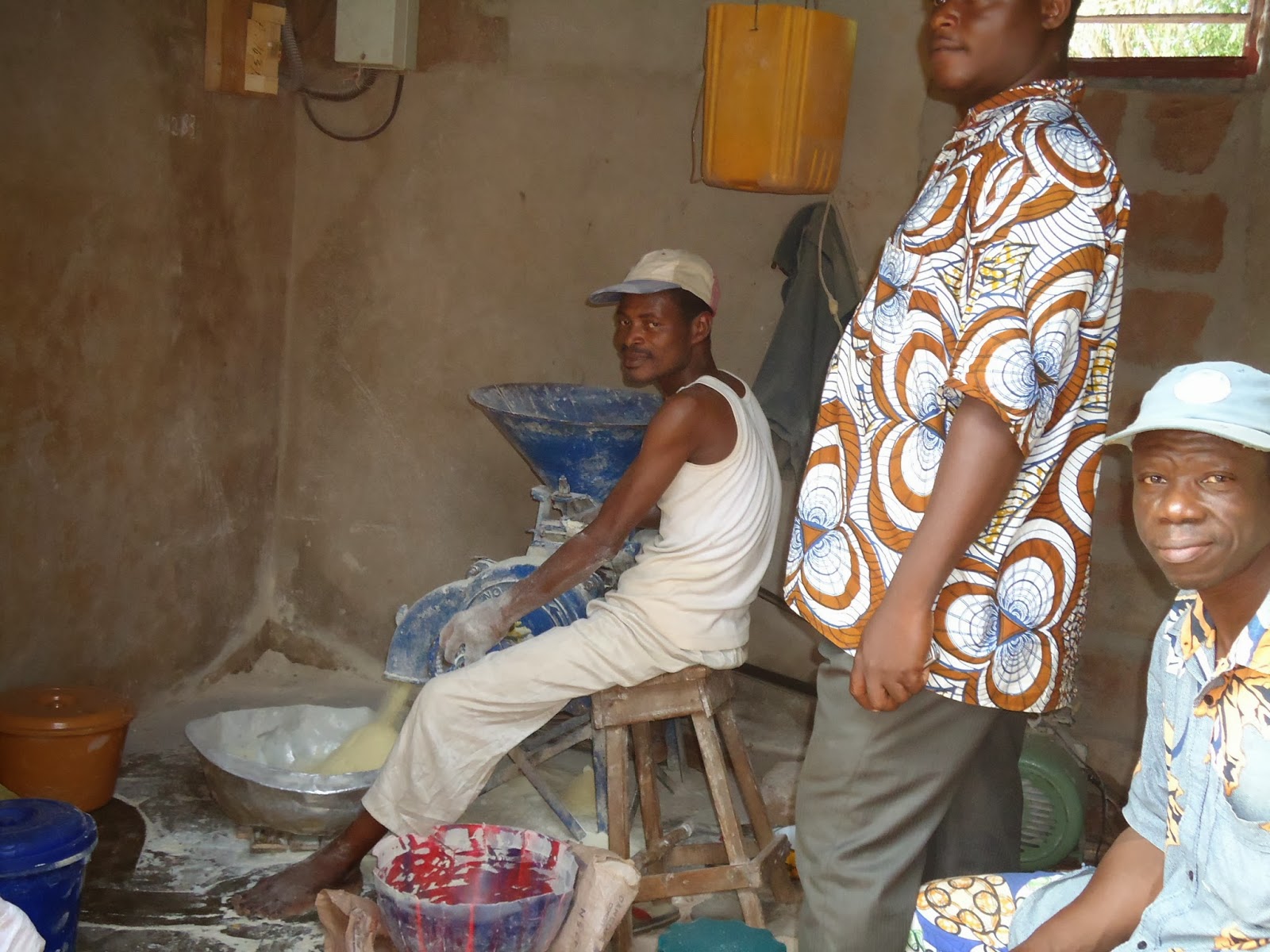We followed a main road west and passed many house plant and yard plant vendors (I'm going back to make some selections soon!). Eventually the pavement gave way to packed sand and small potholes. Apparently this road goes on for about 30 kilometers to Ouidah, a famous vodoun site as well as the historical exit for slaves sold to slave traders. We hope to get to Ouidah soon, once we have a car. We also walked by the airport. The runway literally ends at the road; hopefully the planes taking off are airborne by then! Here's a plane that isn't used any more. Is there a "U-Pull-It" around?
 |
| The rusty plane sits at the western-most end of the airport. |
After awhile, we came upon the village Donn told me about. We could definitely hear the music from the worshipers. Our plan was to come back to the church and check it out. So we continued on through the village, which I think is more like a town. We figured out later that the village is actually called Fidjirosse Beach. It is a destination for locals as well as expats for a fun time at the beach on Sunday afternoons. When we were walking through, many vendors were setting up their stands to sell food and drink. We appeared to be ahead of the crowds.
 |
| This goat was one of many along the road. |
 |
| The doors were open to this church, so we peeked inside and saw this colorful sanctuary. |
 |
| One of many "food carts" setting up for the afternoon rush. |
 |
| Something is grilling on the barbeque, not sure what it is, though. |
 |
| Here's an example of a restaurant on the north side of Beach Road. Hmmm, would you want to eat there? |
 | |
| Not sure why it's called "First Beach," there were others before and after it. But it is colorful! |
 |
| Not far from First Beach was Love Beach. I think I'd pick First Beach myself. On the mid-right is a large sign that has fallen over due to the metal supports rusting from the ocean salt. |
 |
| We continued walking along Beach Road until we came to this deserted amusement park. It was very surreal to see it. There was no one around, not even workers to run it. |
 |
| Here's a secure place to park your zemidjan if you want to head down to the beach! |
It was time to turn around, so we decided to walk from la Route des Peches to the beach and walk east toward Cotonou and home.
 |
| This boat is a bit more colorful. The large building in the background is the outside of the church we walked into. |
We decided to walk as close to the water as possible, but encountered a bit of trouble in doing so. One was that a sneaker wave knocked me over and I was completely soaked. It felt good with the weather being hot, but my cell phone got wet. Luckily it wasn't ruined. The other "trouble" was the rather embarrassing spectacle of seeing people use secluded parts of the shore, close to the water, for a toilet. Gross and unsanitary for sure. We decided it was safest, although hotter, to walk away from the incoming waves and the "toilet zone".
By the time we reached the area where the rockin' church was, the service had ended and so did the raucous music. Oh well, maybe next time!
We walked for about three hours. When we left our house, it was overcast and pleasant (not too hot, but the humidity was bearable because of the ocean breeze). By the time we walked away from the water and back towards home, the skies had cleared and it was quite toasty, even with a breeze. We saw a lot of interesting things on our afternoon "stroll".





.JPG)
.JPG)
.JPG)


.JPG)

.JPG)

.JPG)
